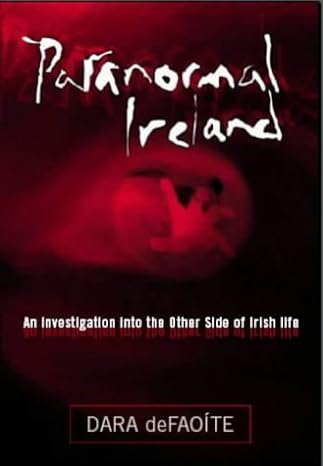The Beast of Gévaudan: Unraveling a Terrifying Predator
Cryptozoology
Friday 27th, December 2024
3 minute read.
In the rugged region of Gévaudan, nestled in south central France, a chilling legend was born in the mid-18th century. Between 1764 and 1767, an unidentified creature terrorized the countryside, leaving a trail of bloodshed and fear in its wake. Dubbed “The Beast of Gévaudan”, this enigmatic predator has since become one of history’s most enduring mysteries.
The first recorded attack occurred in the summer of 1764 when a young woman tending cattle was reportedly confronted by a massive beast. Though her herd’s aggressive response drove the creature away, it wasn’t long before others fell victim. Over the next three years, the Beast was blamed for the deaths of over 100 people, many of them women and children.
Witnesses described the creature as an unusually large, wolf like animal with reddish fur, a long tail, and a distinctive black stripe down its back. Its ferocity and cunning were unmatched, it reportedly ambushed its victims with a mix of stealth and brute force, often targeting the head or neck in fatal attacks.
Gévaudan’s residents lived in constant terror. Entire villages altered their routines, with men arming themselves to patrol the countryside while women and children remained indoors. The French crown, aware of the growing panic, dispatched professional hunters and even military troops to slay the beast. Despite their efforts, the attacks continued unabated.
Jean Chastel, a local farmer, eventually claimed to have killed the Beast in 1767. His story, though shrouded in folklore, suggests that a large wolf or similar predator was shot with a consecrated silver bullet. After Chastel’s kill, the attacks ceased, lending credence to his claim, but doubts persisted.
Scholars and enthusiasts have debated the true identity of the Beast for centuries, with several theories emerging:
The Beast of Gévaudan emerged during a turbulent period in French history. The Seven Years' War (1756–1763) had recently concluded, leaving the countryside economically and socially strained. The attacks fueled broader anxieties about the fragility of rural life and the seeming inability of authorities to protect their people.
The story of the Beast also reflects the Enlightenment’s tension with traditional beliefs. While officials and intellectuals sought rational explanations, local legends and religious interpretations persisted.
Today, the Beast of Gévaudan remains a subject of fascination, inspiring books, films, and academic studies. It represents not just a historical puzzle but also a window into the fears and resilience of a bygone era. Whether it was a wolf, a rogue predator, or something stranger, the Beast’s legacy continues to haunt the collective imagination.
As researchers and storytellers delve into the mystery, the tale of the Beast serves as a reminder of humanity’s enduring struggle to understand the unknown.
The first recorded attack occurred in the summer of 1764 when a young woman tending cattle was reportedly confronted by a massive beast. Though her herd’s aggressive response drove the creature away, it wasn’t long before others fell victim. Over the next three years, the Beast was blamed for the deaths of over 100 people, many of them women and children.
Witnesses described the creature as an unusually large, wolf like animal with reddish fur, a long tail, and a distinctive black stripe down its back. Its ferocity and cunning were unmatched, it reportedly ambushed its victims with a mix of stealth and brute force, often targeting the head or neck in fatal attacks.
Gévaudan’s residents lived in constant terror. Entire villages altered their routines, with men arming themselves to patrol the countryside while women and children remained indoors. The French crown, aware of the growing panic, dispatched professional hunters and even military troops to slay the beast. Despite their efforts, the attacks continued unabated.
Jean Chastel, a local farmer, eventually claimed to have killed the Beast in 1767. His story, though shrouded in folklore, suggests that a large wolf or similar predator was shot with a consecrated silver bullet. After Chastel’s kill, the attacks ceased, lending credence to his claim, but doubts persisted.
Scholars and enthusiasts have debated the true identity of the Beast for centuries, with several theories emerging:
- A Rabid Wolf: Wolves were common in Gévaudan during the 18th century, and a single rabid wolf could explain the Beast’s aggressive behavior. However, skeptics argue that wolves rarely target humans in such a persistent manner.
- An Exotic Animal: Some speculate that the Beast may have been an escaped hyena, lion, or other exotic predator brought to France as part of a traveling menagerie. This would explain its unusual appearance and deadly efficiency.
- A Human Conspiracy: Another theory suggests that the attacks were the work of a human serial killer or a trained animal under someone’s control. This theory is bolstered by the deliberate and seemingly strategic nature of some attacks.
- A Mythical Entity: Given the era’s superstitions, many locals believed the Beast was a punishment from God or a supernatural creature. Though less plausible, these beliefs highlight the psychological impact of the attacks.
The Beast of Gévaudan emerged during a turbulent period in French history. The Seven Years' War (1756–1763) had recently concluded, leaving the countryside economically and socially strained. The attacks fueled broader anxieties about the fragility of rural life and the seeming inability of authorities to protect their people.
The story of the Beast also reflects the Enlightenment’s tension with traditional beliefs. While officials and intellectuals sought rational explanations, local legends and religious interpretations persisted.
Today, the Beast of Gévaudan remains a subject of fascination, inspiring books, films, and academic studies. It represents not just a historical puzzle but also a window into the fears and resilience of a bygone era. Whether it was a wolf, a rogue predator, or something stranger, the Beast’s legacy continues to haunt the collective imagination.
As researchers and storytellers delve into the mystery, the tale of the Beast serves as a reminder of humanity’s enduring struggle to understand the unknown.



